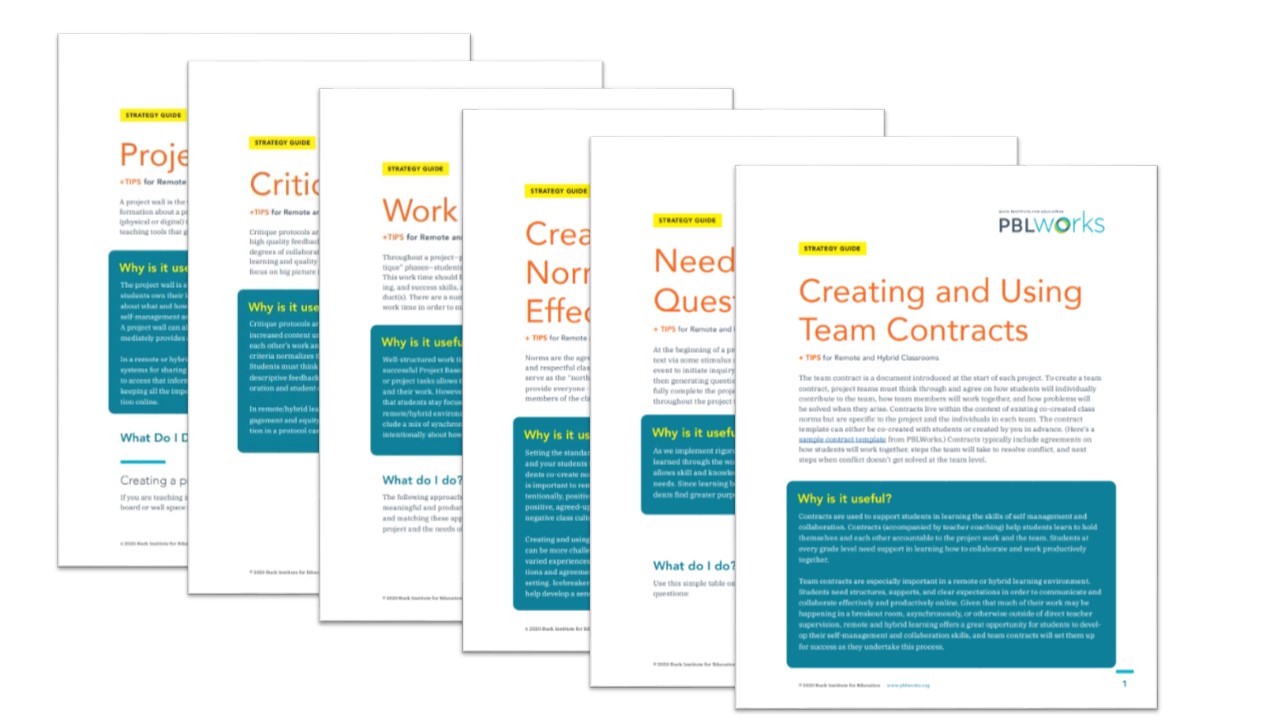
As vaccines begin to roll out and policies continue to change, things are shifting in schools—but it’s pretty clear that remote and hybrid learning aren’t going away.
Schools and teachers are looking ahead and recognizing that even after reopening, the structures and practices in our schools don’t (or won’t) look the same as they did pre-pandemic.
And thinking differently about how we do PBL is still as critical now as it was 6 months ago.
Last fall, your PBL questions were popping up in workshops and on social media… “So where does my ‘project wall’ live without physical walls?” “And what should ‘work time’ look like in a hybrid setting?” “How do I support students in better effective online collaboration?” (You all ask great questions!)
To help answer those questions, we updated some of our existing series of PBL Strategy Guides—already a favorite reference for teachers. So as you might have seen, there are now go-to tips for remote learning in 6 of our 18 PBL Strategy Guides.

Curious? Here’s a look at the 6 PBL Strategy Guides that include “tips for remote learning.”
The 6 guides that we revised last Fall targeted specific PBL strategies that look different when implemented in in-person, hybrid, or fully remote settings. Download the PDF of each guide to view all the details.
- Strategy Guide: Creating and Using Team Contracts
- Strategy Guide: Need to Knows
- Strategy Guide: Creating and Using Norms to Build Effective Culture
- Strategy Guide: Work Time
- Strategy Guide: Critique Protocols
- Strategy Guide: Project Walls
When we worked on each of these, we were fueled by the chance to answer your questions with actionable tips—by providing ideas to help teachers right now in the classroom. We thought a lot about online-specific questions, like, “What’s really the best tech tool for a specific purpose?”
The tips are mindful of the varied and frequently changing contexts in which you are teaching, so that these guides would be useful in the moment and down the road as you move between remote, hybrid, and in-person settings.
As always, our overall goal was making it easier for you to implement PBL strategies that deepen student learning.
Some examples of what the guides include...
- How to structure asynchronous peer critique processes to ensure that every student’s work gets reviewed (Strategy Guide: Critique Protocols)
- How to use digital tools to manage and track your students' need-to-know questions – Strategy Guide: Need to Knows
- How to organize remote work time in a way that keeps students engaged and allows you to provide targeted support (Work Time)
- How to work with students to co-create clear and consistent expectations for both in-person and online learning (Creating and Using Norms to Build Effective Culture)
Check them out. Let us know what you think!
In the process, I hope you’ll find some new tips for your classroom in the days ahead.
